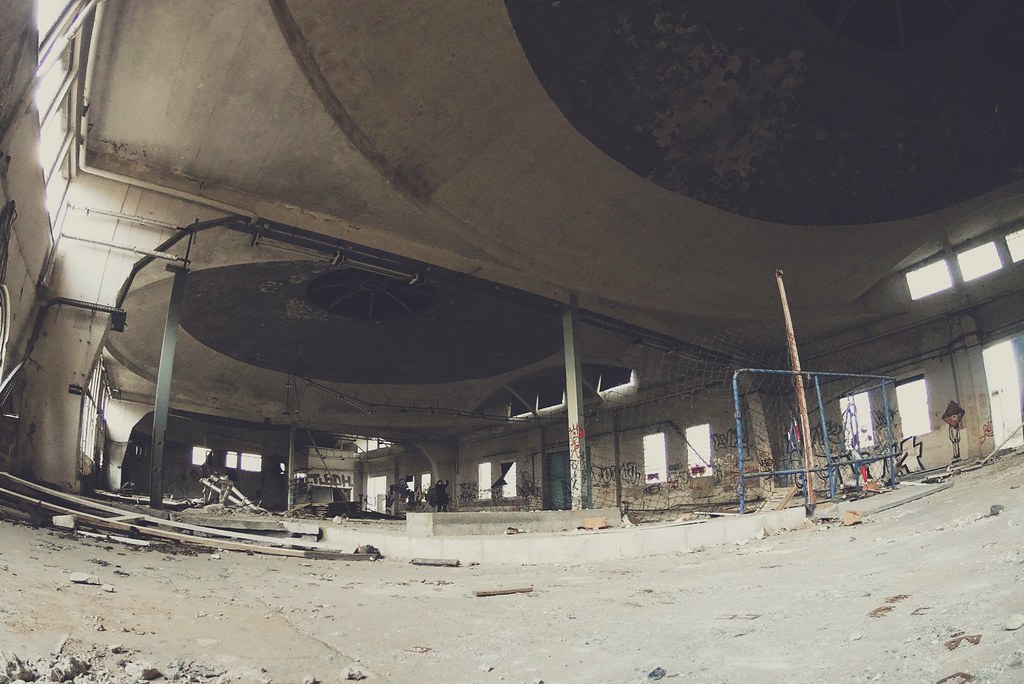With our guide to abandoned airports in Berlin, you can dive into the remnants of Berlin’s aviation history and uncover hidden stories, wartime echoes, and the secrets behind deserted runways.
Here, you will embark on a journey through time, uncovering the hidden gems of Berlin’s lost places. Urban exploration can be a refreshing experience. Our passion for discovering the stories behind forgotten sites led us to explore the ruins of the city’s aviation history.
Here, we present five abandoned airports in Berlin, each with unique tales of the past and a bonus exploration of the iconic Tempelhof.
Join us on this exciting adventure!

Flugplatz Johannisthal Lost Place: From Birthplace of Flight to Desolate Wasteland
Opened in 1909, Flugplatz Johannisthal was Germany’s early commercial airfield, where the birth of heavier-than-air flight was witnessed. However, our visit in January 2021 revealed a desolate wasteland, perfect for an abandoned airport in Berlin, contrasting the rich aviation history.


The abandoned airfield near Adlershof stood eerily quiet, with remnants of a bygone era. Despite a police station nearby, Flugplatz Johannisthal showcased the stark reality of time’s impact on once-thriving aviation hubs.
The Abandoned Flugplatz Brand: A Transformation from Warfare to Water Park
Flugplatz Brand, situated 60 kilometers south of Berlin, served as a Luftwaffe air base during World War II. Soviet forces took control post-war until 1990, when it was transferred to German authorities. Later, Cargolifter purchased the area, assembling the world’s largest hangar.




The company’s bankruptcy in 2002 led to the transformation of the hangar into Tropical Islands, a tropical-themed water park. The pictures here are from an exploration trip in January 2017, uncovering a military airfield’s remnants covered in snow, revealing a captivating history.
The Forgotten Flugplatz Rangsdorf: Where History Landed Quietly
Flugplatz Rangsdorf, a town south of Berlin, holds a historical secret. In 1944, Claus Schenk Graf von Stauffenberg landed here after attempting to assassinate Hitler. Our exploration in March 2018 unveiled a quiet, fenced-off area surrounded by decaying buildings. It was once a crucial airfield that echoes with the distant hum of passing cars.




The Flugplatz Rangsdorf is one of many abandoned airports in Berlin, which is no longer open to the public. It is a place that reminds us of its importance during the war. It is now left in ruins and silent but has a story to tell.
Flugplatz Oranienburg: Remnants Amidst Modern Development
Built before World War II, Flugplatz Oranienburg served the Luftwaffe until 1945. Our visit in March 2021 revealed remnants of the airfield near Oranienburg Hauptbahnhof. Most of the area led to a federal highway and a REWE distribution center.


The long-awaited exploration, accompanied by drones capturing the site from above, provided a unique perspective on the connection between Heinkel-Werke Oranienburg and Flugplatz Oranienburg.
Flugzeughallen Karlshorst: Witness to History’s End
Situated in Karlshorst, Flugzeughallen Karlshorst holds historical significance as the site of Nazi Germany’s unconditional surrender in 1945. Despite the area’s association with the German-Russian Museum, our exploration focused on the abandoned airplane remnants.
Karlshorst, not a typical tourist spot, reveals layers of history tied to the end of World War II and the subsequent Cold War era.
Bonus: The Mystery of Tempelhof’s Abandoned Airplane
While Tempelhof Airport itself transformed into a vibrant public park, a mystery remained: why is a lone plane fenced off on the vast field? This seemingly-forgotten aircraft holds a piece of Tempelhof’s past as part of a short-lived regional airline.
At Tempelhof, a peculiar sight greets visitors—an abandoned airplane known as N106TA. This mysterious aircraft, protected by a fence near one of the landing strips, intrigued us for years. Venturing beyond our initial curiosity, our drone flights revealed the story behind Tempelhof Airways, the regional airline connected to this abandoned aircraft.


The abandoned Tempelhof Airplane is a silent testament to the enigmatic aviation history within Berlin’s iconic Tempelhof airport.
Forgotten Skies: Abandoned Airports in Berlin’s Historic Landscape
Berlin is packed with historical surprises, and its abandoned airfields are a testament to the city’s ever-changing story. From their roles in wars to pioneering flights, these sites paint a picture of what once were. It’s tempting to sneak inside, but we always stay cautious – safety first!
Join us on this journey of exploration, where every decaying structure tells a tale of the past.
